-
Posts
765 -
Joined
-
Last visited
-
Days Won
6
Content Type
Profiles
Forums
Gallery
Posts posted by SantaMonica
-
-
Very nice. Can you slide the lights all the way to the right, so they are closer to the screen?
Any more powerful bulbs you can use?
-
We are talking with that guy at the scrubber site. Not great growth; he used the very low power panel, and, had it too far away. Several folks should be testing other panels soon.
-
Successes of the Day:
brianhellno on the MFK site: "Just wanted to share my success with a turf scrubber with my freshwater tank. Currently I have a 125 with (5) 6-inch piranha, (6) 4-inch giant danios, about (20) 1-inch baby black cons, (2) 2-inch green terrors, (2) 2-inch jack dempseys, and (1) 2.5 inch blue malawi cichlid. The smaller fish were all supposed to be feeders, but the piranha ignore them. Anyways I've had the scrubber up and running for almost three weeks now and I finally tested the water parameters: Ammonia 0 ppm, Nitrite 0 ppm, Nitrate 5 ppm. Not too bad! Usually the Nitrate sits around 40 to 80 ppm right before a water change, so this is definitely an improvement. All I can say is thanks for the great idea!
worley on the scrubber site: "Well just got my phosphate test kit and did a test... *drumroll* .... 0ppm. It's the API phosphate test kit, and it was the very lightest green on the salt water card (0ppm). That's a great result, especially as I'm now feeding tonnes into the tank, 1 block of brine shrimp and 1 of mysis, plus some live brine (fed with live phyto a an hour before feeding to the fish) and some pellet foods. [...] I still can't get over the phosphate test, and how low the nitrates are considering there's not been a water change in 2 months and so much food has gone in.
jan on the RPhil site: "Today is my 24th day of cycling, I measured my water my parameters and here are the result: Nitrate 0ppm. Turf algae is almost all over my screen Razz !!!! thanks for this great Idea!
-
LEDs for Scrubbers
Many folks want to try an LED scrubber. We do to, which is why we are trying to figure them out on the scrubber site. However, they are a ways down the road; nothing to report yet. If anyone wants to try themselves, here is a starting point:
Low-Power LED panel, to experiement with:
http://shop.sunshine-systems.com/product.sc?productId=1
Higher-Power LED panel, not sure if enough for good growth:
http://shop.sunshine-systems.com/product.sc?productId=10
The deal with LEDs is that you need lots of light power to have good growth. How much is still unknown. But the above panels are cheap enough that some folks should be able to give them a try. It's just for experimenting, though. If you need results you can count on, get a 23W CFL full spectrum or bigger, or a T5HO, or halide
-
.
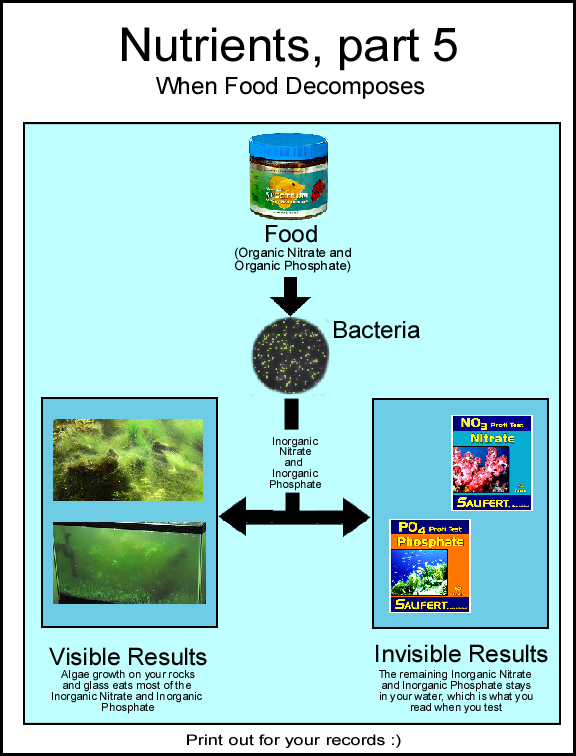
Text Version: Nutrients, part 5
When Food Decomposes
Food ==> Bacteria ==> Inorganic Nitrate and Inorganic Phosphate ==>
==> Algae growth on your rocks and glass eats most of the
Inorganic Nitrate and Inorganic Phosphate.
==> The remaining Inorganic Nitrate and Inorganic Phosphate
stays in your water, which is what you read when you test.
Previous Versions:
http://www.radio-media.com/fish/Nutrients1.jpg
http://www.radio-media.com/fish/Nutrients2.jpg
http://www.radio-media.com/fish/Nutrients3.jpg
http://www.radio-media.com/fish/Nutrients4.jpg
.
.
.
-
Yep. A tank can't produce more Inorganic Nitrate and Inorganic Phosphate that what is put in as food; doesn't matter what livestock there is. I pretty amazing to see pieces of waste floating around the tank; you think for sure it polluting everying, but it actually feeds the corals/inverts, and, the scrubber keeps Inorganic Nitrate and Inorganic Phosphate very low.
-
Yes, maybe a little bigger, with more lights, to handle the fish waste. A few hermit crabs will break up the waste quickly, and the bacteria will dissolve the rest.
-
For nitrate and phosphate control, yes. A scrubber will also raise your oxygen, pH, remove metals and CO2, and grow copepods.
-
Nope, it does not build up. Waste is like fertilizer (like cow waste for gardens)... it is exactly what feeds your coral (and some inverts and fish). Then it is eaten by bacteria, which results in Inorganic Nitrate and Inorganic Phosphate that feeds the scrubber algae. You can even add more waste into the tank, and corals will grow even more. The scrubber removes what's left. This is how the ocean works.
-
Well that clear plastic in front of the spraybar is a good idea.
As for cycling, there should be plenty of nutrients in there already. If not, just add a few pieces of any kinds of food. Within three days it will be dissolved, and growth will be on the screen.
-
Reminder Of The Day: Feeding
Here is a diagram by Eric Borneman that shows what feeds on what:
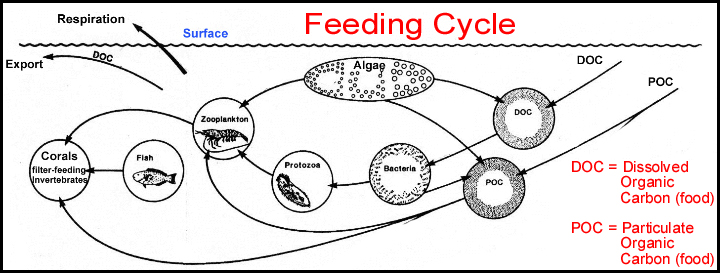
It was taken from Eric's two building block articles that cover what happens when you feed your tank. This information is what you need to know to really understand what scrubbers do:
http://reefkeeping.com/issues/2003-01/eb/index.php
http://reefkeeping.com/issues/2003-03/eb/index.php
.
.
-
Well there are three folks now on the scrubber builder directory who can build your scrubber for you: 2 in the U.S., 1 in the U.K. So there is no excuse to not have your own scrubber

http://www.algaescrubber.net/forums/viewto...hp?f=9&t=25
.
.
-
Update Of The Day:
"Christophe" on the MD site has an idea which could greatly improve a screen's performance after cleaning. As you know, after cleaning there is very little algae remaining to do any filtering. One way around this has been to clean half the screen each week, and another is to use two screens, cleaning only one screen per week. Yet another way is to pancake two screens together which makes extra deep holes for the algae to grab on to. (By the way, "rug canvas" holds on to algae much better than "plastic canvas", it's just more flimsy and hard to work with.)
Christophe's idea was to use Lego Base Plates (the ones you played with as a kid):
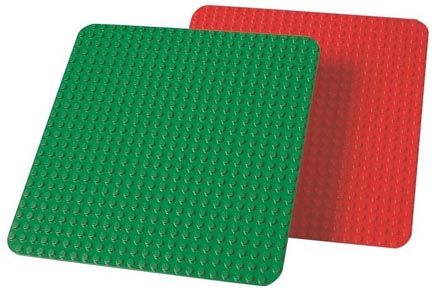
They are available all over the web, and at almost every toy store and discount store. The beauty of these plates is that no matter how hard you clean/scrape, algae will still remain in-between the pegs (except the first week or so, where it will all come off anyways). Of course, you'll still want to sand/scratch all the areas in-between the pegs, but overall this looks very promising, if someone else would like to try it.
One disadvantage is that the plates are not (at least that I could find) available in clear, so a light on one side does not benefit the other side like it does with a screen. But since these plates are only formed one-sided anyways, it might not be such a bad thing, and indeed would be perfect for a twin-screen one-bulb setup.
-
One person. We are now experimenting with LED's on the scrubber site, but there is not a success to post yet.
-
The easy way is to put a block of foam in between the slots. But you have to clean it daily. Or you could silicone an under-divider yourself. Won't be pretty, but will work.
-
Quotes Of The Day:
Eric Borneman: "What turfs are, essentially, are excellent nitrogen and phosphorus uptake species, with a number of benefits over many other species: faster growing, less invasive, more efficient and less toxic than macroalgae, much more efficient by fast growth than Xenia, and far more effective in most tanks than seagrasses (which require so much more light, sediments, symbiotic microbes, benthic nutrients, and space) or mangroves. The big benefit of turfs as nutrient uptake and export, if needed or desired (by removal of the turfs as they grow), is that they grow faster than macroalgae in biomass, are generally not producers of prolific secondary metabolites (their defense and competition is fast growth), and they are confined to a specific area and are thus not invasive. Even if some get released into the tank, they are very palatable and are a treat for herbivorous fishes and invertebrates. In fact, turfs are havens for copepods, amphipods, ostracods, and polychaetes, favoring their reproduction."
Tom Barr: "You might also suggest this to folks, you can prep this [scrubber] filter very easily by using a bucket and the pump and getting a good film of growth outside (if possible , near a window with direct sun light) on the screen prior to use in the aquarium; no waiting for it to get all furry. This is pre cycling for an algae scrubber. There is a little sloughing and adaptation once you place in the tank, but this will accelerate the process. Use a bucket to prep things instead of the aquarium, this way you can get on top of things and cycle the tank much faster, essentially bypassing the cycle altogether, a so called "silent cycle". Algae remove NH4 [ammonium] directly, so there's no NO2 or NO3 build up. No need for bacteria (they will form later anyway, but will have a less prominent role). For folks that do FC ["fish cycling" in FW tanks], they should prep their algae filters in a bucket, not bomb the whole tank with NH3 [ammonia]. That's foolish to do that."
-
Post a pic of where the flow goes after the screen. Also consider an under-over-under:
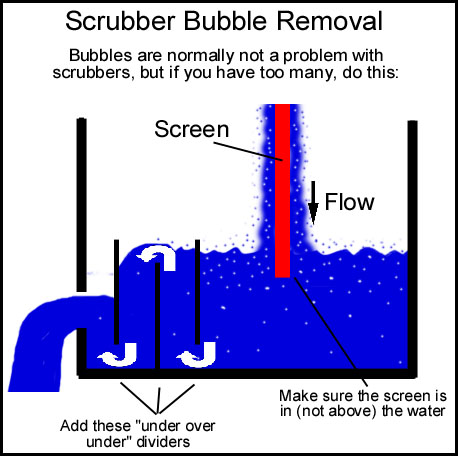
-
Update Of The Day: Overflow GPH and Screen Width
If you are doing an overflow feed like this:
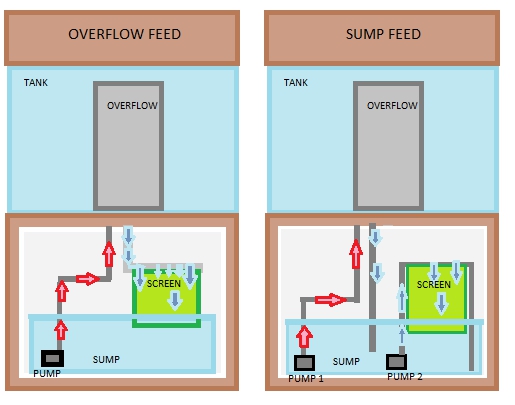
...then the overflow gallon per hour (U.S. gph) will determine how much flow you have to work with. You have to start from there, and size your screen accordingly. The maximum flow you'll get to the screen will be what's going through your overflow now. This is easy to figure out by counting how many seconds it takes your overflow to fill a one-gallon jug:
60 seconds = 60 gph
30 seconds = 120 gph
15 seconds = 240 gph
10 seconds = 360 gph
8 seconds = 450 gph
5 seconds = 720 gph
4 seconds = 900 gph
3 seconds = 1200 gph
Take this gph number that you end up with, and divide by 35, to get the number of inches wide the screen should be. For example, if your overflow was 240 gph, then divide this by 35 to get 6.8 (or just say 7) inches. So your screen should be 7 inches wide. Or you can use this chart:
Screen Width-----Gallons Per Hour (GPH)
1" 35
2" 70
3" 105
4" 140
5" 175
6" 210
7" 245
8" 280
9" 315
10" 350
11" 385
12" 420
13" 455
14" 490
15" 525
16" 560
17" 595
18" 630
19" 665
20" 700
21" 735
22" 770
23" 805
24" 840
25" 875
26" 910
27" 945
28" 980
29" 1015
30" 1050
How tall should the screen it be? That is determined by how much screen area you need, which is determined by how many gallons you have. Try to get one square inch of screen (lit both sides) for every gallon. If lit on only one side, double the screen area.
When finished, this is how you want your flow to look:
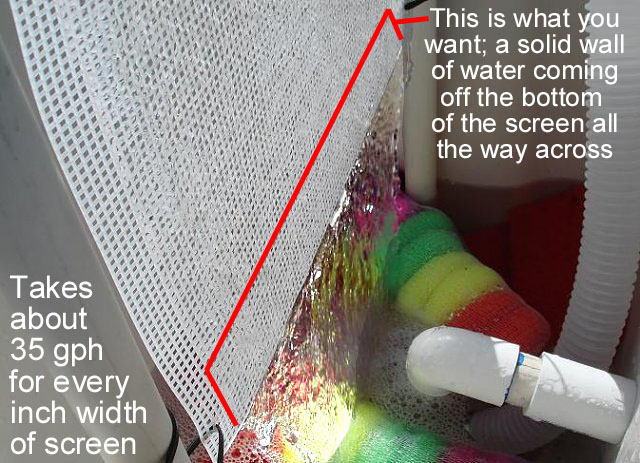
-
Results Of The Day:
Johnt on the UR site: "corals are doing extremely well, the water is clear, and the rocks are starting to look like new. the scrubber is improving things; I'm getting better growth and the rocks are clearing, N & P are up and down a bit, as I keep cleaning the screen too well, but are remaining low even though I've not had the skimmer, rowaphos reactor or carbon running for 2 months."
Sinful_Waters on the RS site: "Ok I couldnt resist! After reading and reading forum after forum, I had to know what all the excitement was about with the ats. End result, miracles happen! Ive spent the last year and a half battling the green stuff, with excessive waterchanges, phosphate reactor, etss skimmer, limited lighting period, pulling by hand, constant dusting with turkey baster, Lawnmower blen, blue leg hermit, lettice nudis, astrea snails, super clean sand, remote dsb, etc, etc, etc. The algae covered every inch of LR and was seriously suffocating my corals. What do we do when the tough gets going, we build an ats! I did as was advised and built the 5 gal [bucket] with a doulble sided screen, two 21 watt, 6500k compact flourecent bulbs, and the flow is supplied from my overflow and returned into sump. I do a light scrubb on the screen about every 4 days, and thats all. It actually took a few weeks to get the green going, but when it did the [nuisance] algae in the tank started to melt away. It went away so fast I was literally worried that my fish, crabs, snails would all be deprived of the green feast. Long story short, overfeeding is not in my vocab, and my sps, lps, corals have beautiful color and growth, with perfect tank conditions and stability. Being on a limited budget I couldnt be more pleased at the ease of the build and its amazinig effectiveness (excuse the spelling)."
Keifer1122 on the RS site: "update: the ats on 75 gallon, almost 2 months, been put on with only about 20lbs live rock, [...] also 8 fish, 1 1/2" of sand. N & P undetectable, all params good, havent done a water change in 2 months. had to do about 20 gallon wc every week before the install. $$$$$$$. 12 gallon aquapod with ats been about 17 days. N is about 10, was 15 before the install, with pair of percs feeding 3 times a day pellets in the morning and afternoon, with a pinky nail cube of rods, also piece of silverside every week for the Bta. the numbers arent falling fast, but its steady (with a 2gal water change i could boost the process or just cut feedings). coral growth: everythings growing like a weed including my yellow m.digitata that i got along with my screen from inland aquatics. all in all, tanks look sweet. life made easy."
Arab_NA on the MASA site: "My scrubber after 3 weeks, cleaning 1 side each 7 days: My PO4 went from 1.0 to below 0.1, and NO3 from 50ppm to 0ppm. I am feeding 3 times a day now and have no problems at all! Thanks SantaMonica for saving my tank and giving me back the love for this stunning hobby."
mudshark on the Masa site: "WOW things are starting to happen now. The algea is getting really thick on the screens after 20 days. I measured phosphate, which has always been low, as it was being used by algea in the display. It read a big fat 0. In fact it seems to be at a crossover point where the algea on the screens is growing faster, and regressing in the display. I've taken some pics of SPS colours now, altough they have already improved since the introduction of the screens. I'm hoping to post some further improved colours at a later stage."
Sly on the SWF site: I've had my scrubber running since September. When I started, my phosphates were 8-10 ppm or maybe higher. The test water turned a very dark blue, indicating high phosphates. Today I did a test and can verify that my phosphates are now between 2 and 4 ppm. I am still getting massive growth in the scrubber.. So far the nitrates have reduced some, but not much... maybe by 5 ppm. I am seeing the greatest reduction in phosphate so far. Maybe the nitrate will start going down some more as the phosphate gets consumed completely. Some background: Tank has been running for 7 years. Using RO/DI water, ozone, refugium with macros, UV sterilization, skimmer and [now] scrubber. I don't really do water changes. The last one I did was sometime in 2007. I have had high phosphates for quite a while, and nitrates have been higher than I wanted, but still manageable. My fish and corals are still growing and thriving. I have never seen anything that would reduce the phosphate in my tank. Even water changes only lowered them momentarily. They would go back up in just a few days. This is the first time I've ever seen a reduction in phosphates. I suspect that in another month they may well be at 0ppm. Nitrate reduction still remains to be seen. Overall though, I think the scrubber was a positive addition to my tank. I'm finally starting to get some more corraline growth like I used to have. The growth is slow but I do see a definite increase in the vibrance and quantity of corraline in my tank."
-
Sizes are correct, and nice idea of using the T for placement (and no you can't have too much flow) , but if you are going to use acrylic sheet, glue real screen material on it. Here are some choices:
http://www.everythingplasticcanvas.com/pc-...sh-12-x-18.aspx
http://www.joann.com/joann/catalog.jsp?CAT...PRODID=prd12195
http://www.aquaticeco.com/subcategories/2/...ank%20divider/0
Overall the rug canvas will grow the most algae the quickest. Don't try your scrubber without a screen though, because when you go to clean, all the algae will come off and you'll have no filtering.
-
Question:
The DIY bucket or sump scrubber is basically a level 1 project. Simple, free, easy DIY, and works great. Yes they are a bit large and ugly, but who cares. Level 2 are the acrylics. Self contained, small (only six inches or so thick), powerful, and nice looking. But they are so hard to make that only two people besides me have made them (and one of them I had to get made for him). I thought that since so many people made DIY sumps and tanks, many more would have made nice looking acrylics. Guess not. And only one person is on the builder list.
Well now I'm working on level 3. Ultra small (one inch thick), high light power, unbreakable, etc. Basically the same scrubbing power as a level 1 in a sump, but the size of a book. Problem is, they are impossible to DIY. So my question is, would anybody want to discuss the building of something that they can't build themselves?
-
1. It's easy to DIY the lighting. You don't need reflectors for your bulbs. Just a compact FL bulb suspended on a wire
2. Save energy. One light source is used to light 2 screens.
3. Take note this is good if you already have enough flow to power both screens. Adding an extra pump just to save on a light source gets you back to square one.
Don't forget about being able to clean one screen while still getting filtering from the other.
- I intend to have a DSB under the screens and I will also use that section as a refugium for different species of macro algae.Remember that the scrubber will out-compete other macros for nutrients (that's why scrubbers work so well). With an efficient scrubber like you are setting set up, there really is no need for other macros. However, if you want a refuge for pods and such, dsb or ssb or rock rubble will be great.
Can't wait for the growth pics and nutrient tests

-
Thanks mucho.
-
"Todj2002" on the SWF site:
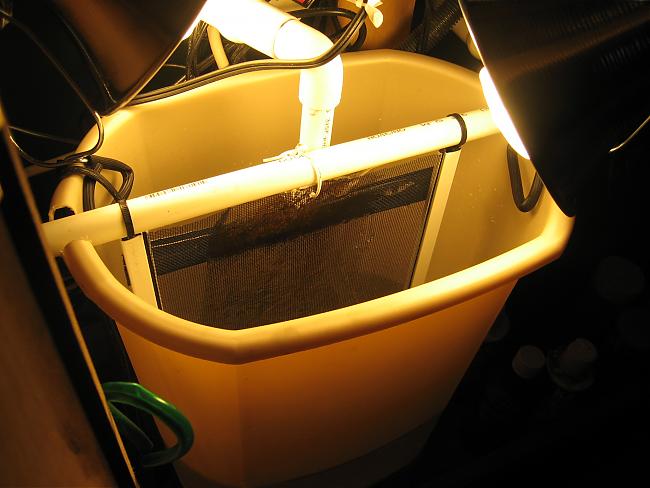
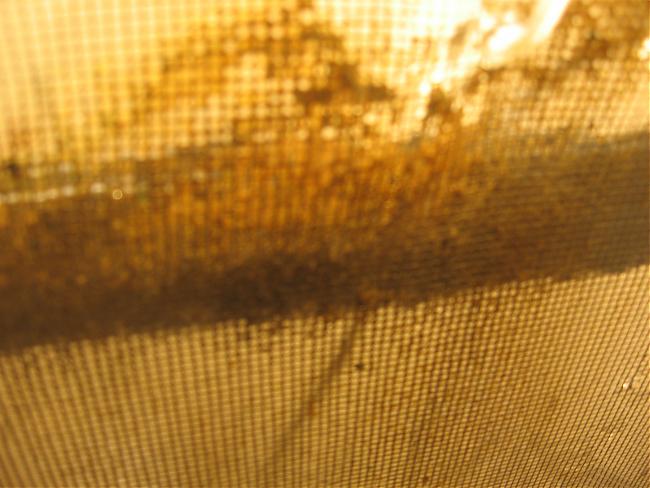
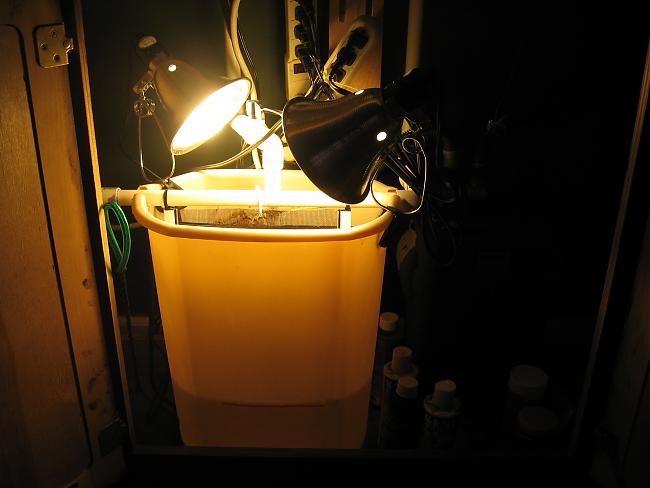
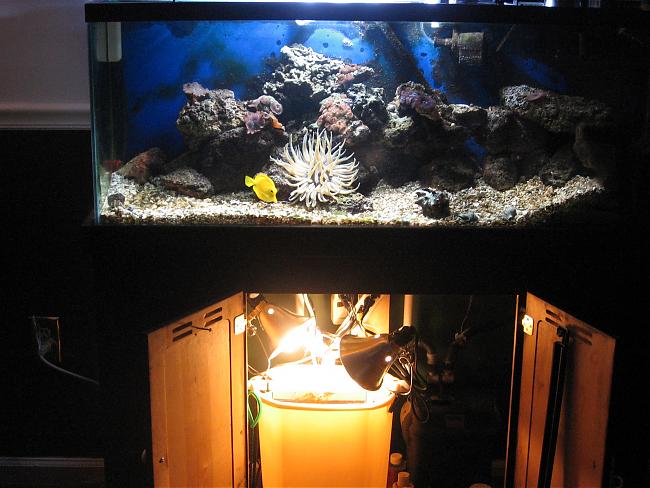
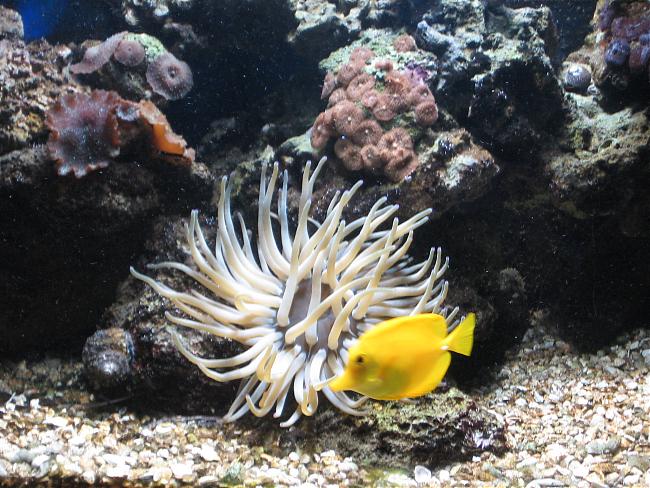
"Tom" on the RP site:
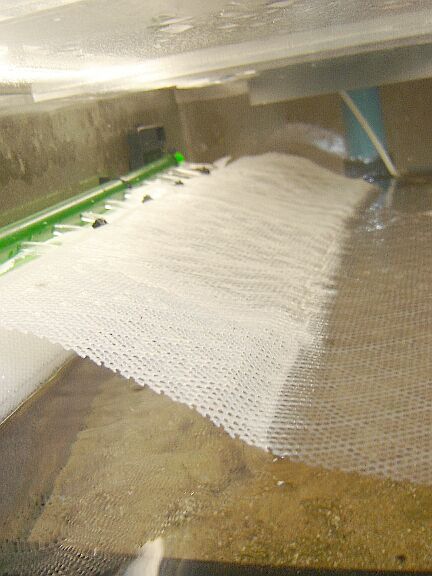
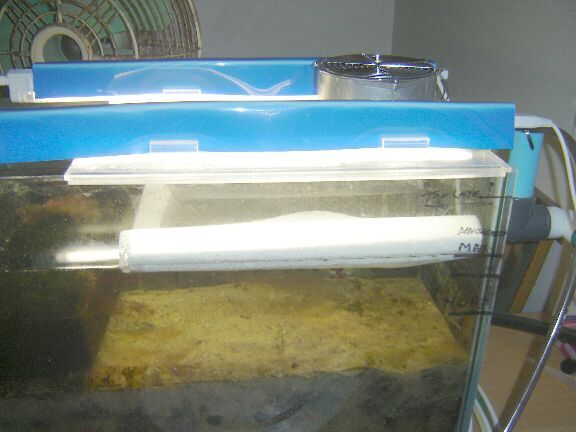
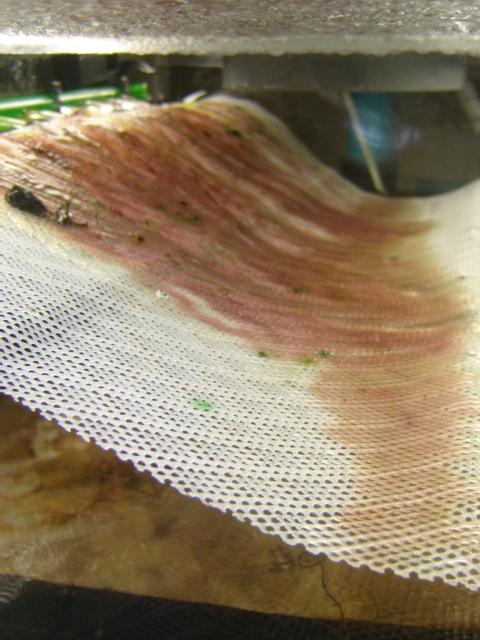
"Worley" on the AS site:
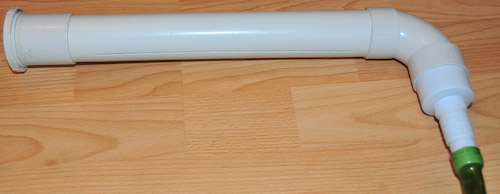
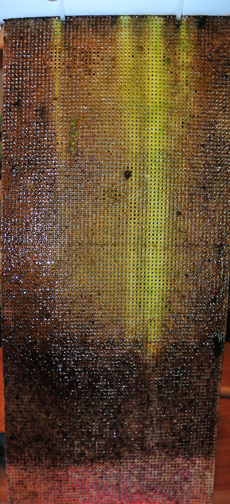


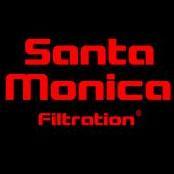
Mega Powerful Nitrate and Phosphate Remover - DIY!
in General Reefkeeping_
Posted
Builds/Designs Of The Week:
Aqualityplace on the UR site:
Nickq on the UR site:
Dave3441 on the UR site:
RentalDeceptionist on the UR site:
Workers99 on the UR site: